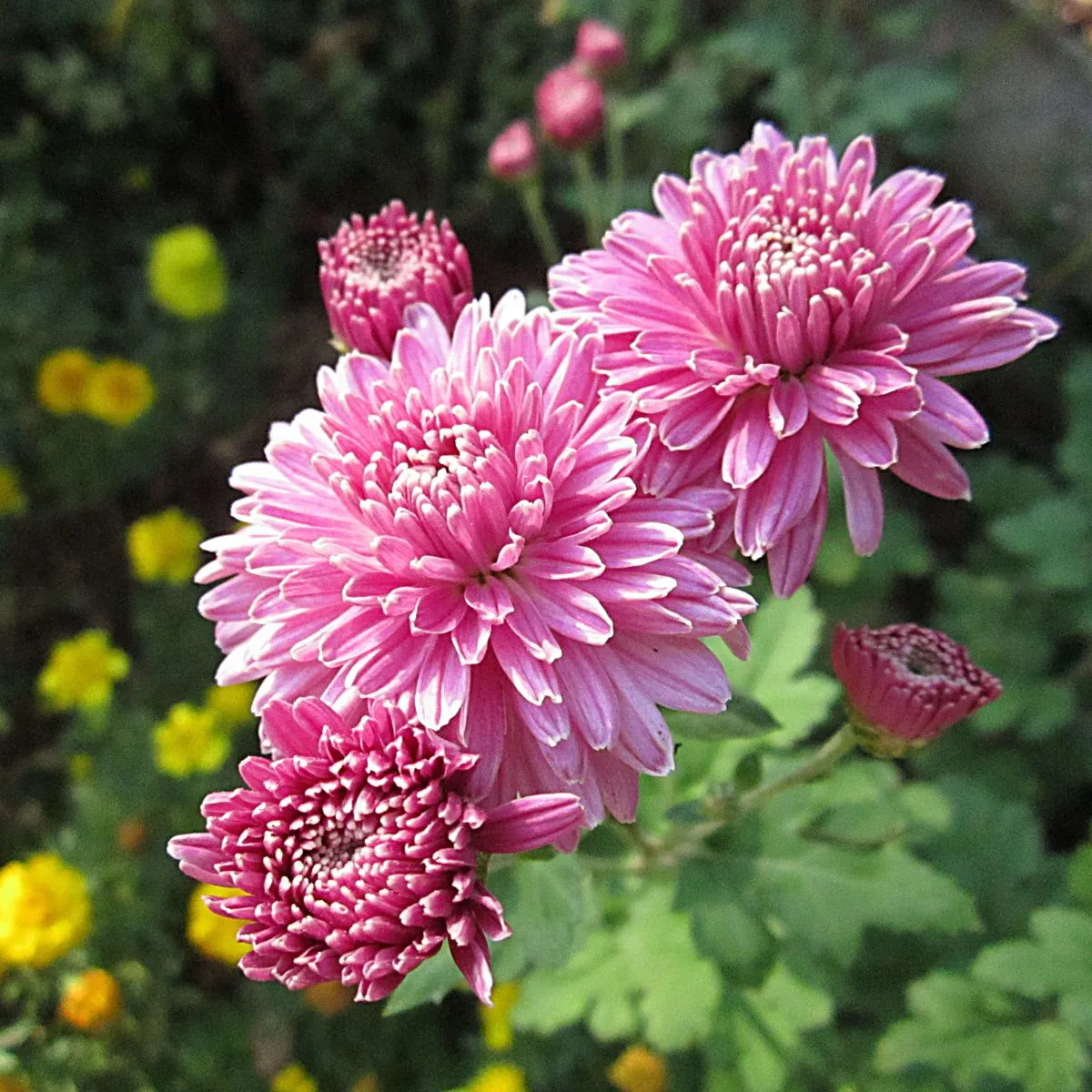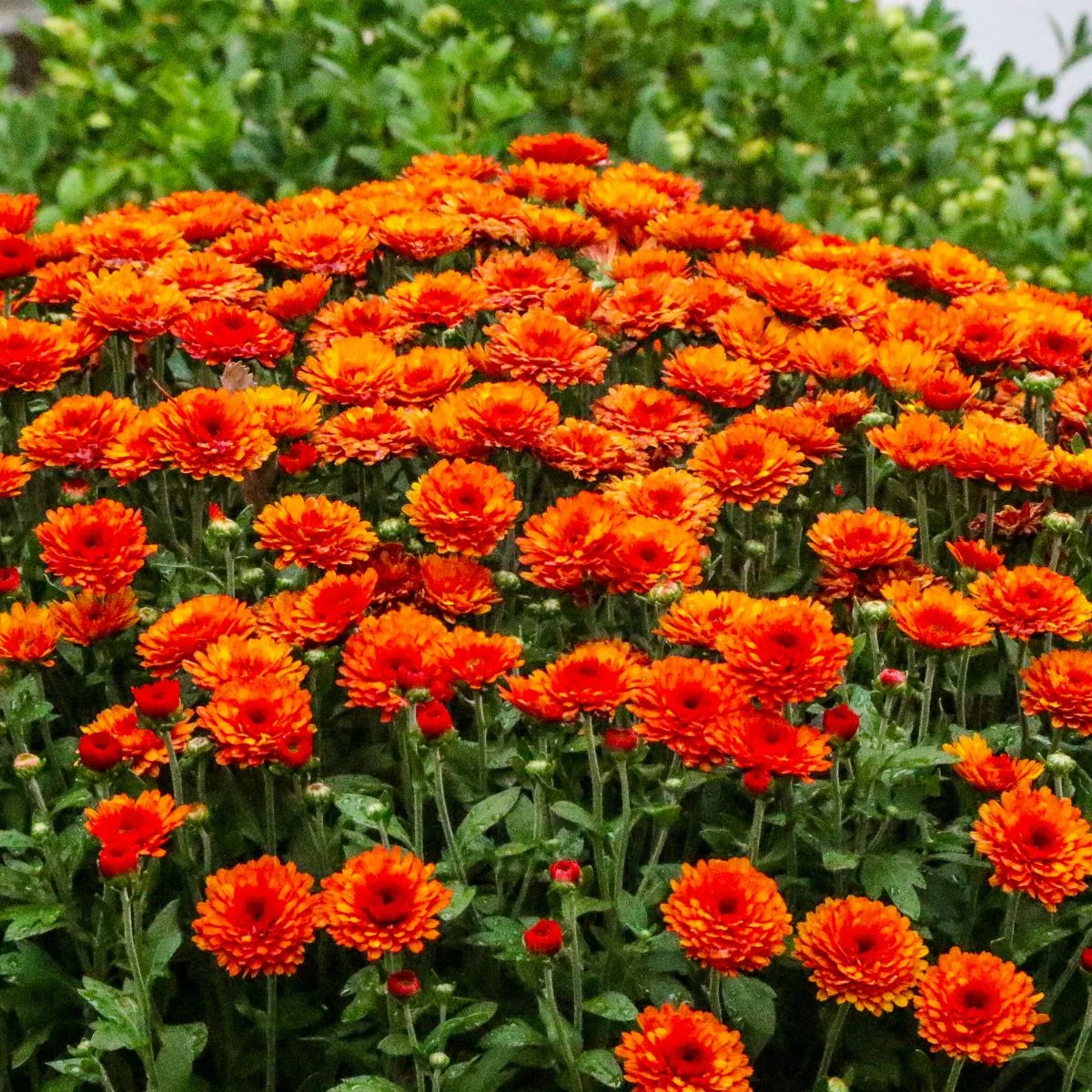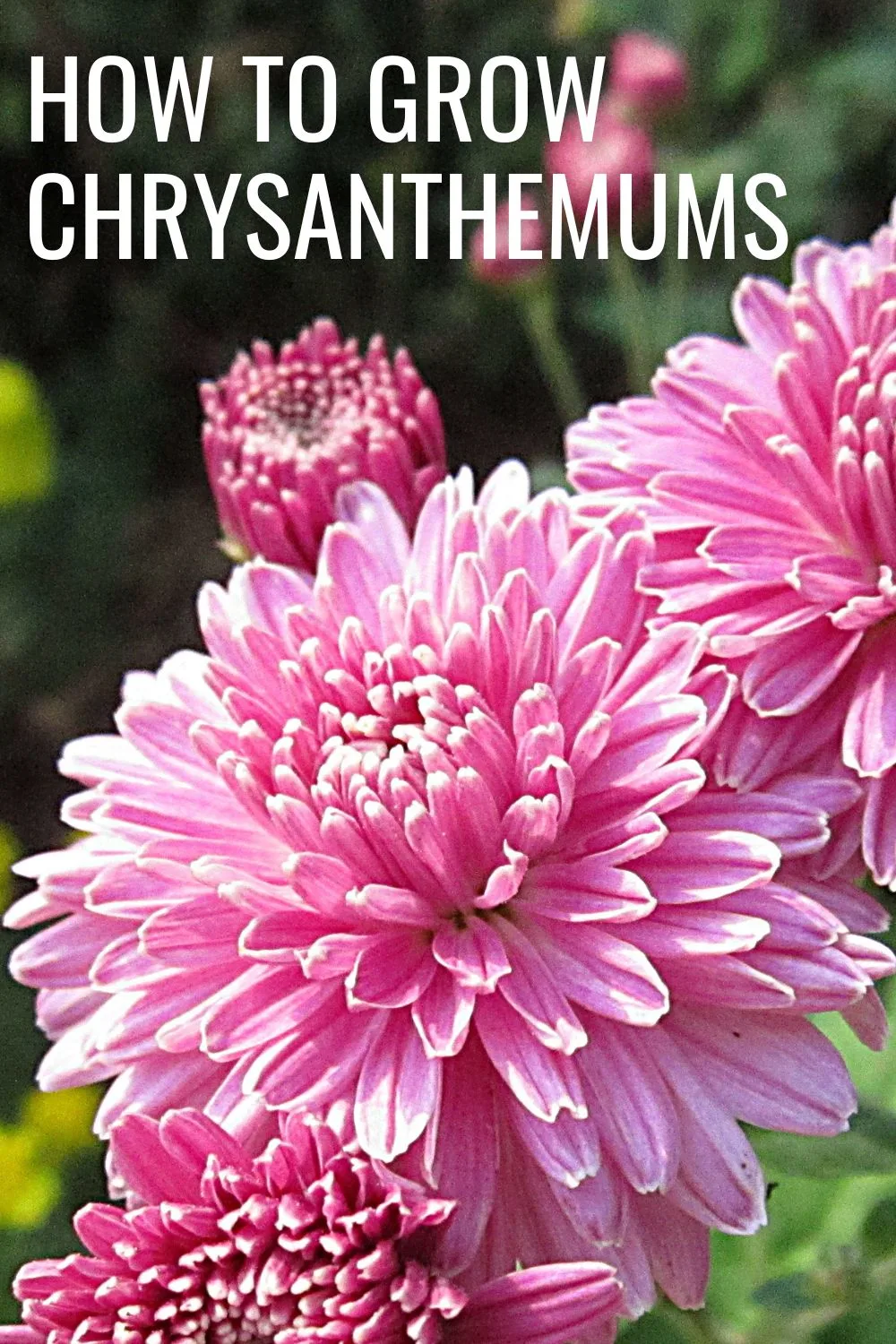Once you learn how to grow chrysanthemums, you can have beautiful mums that last longer than store-bought ones. Chrysanthemums are one of the most rewarding flowers to grow because of their vibrant colors and hardy blooms. When grown properly, chrysanthemums can provide beautiful blossoms from the early autumn through late spring, depending on the climate.

Chrysanthemums, also called “mums” for short or “October roses” are a popular flowering plant that most people get to decorate their front porch in the fall, and then thro away. This large family of flowers includes hundreds of varieties, each showing off their unique colors and shapes.
How to Grow Chrysanthemums

Before getting started, make sure you choose varieties that are suited to your specific climate conditions: chrysanthemum plants prefer soil that is evenly moist and well-drained. If growing chrysanthemums in a pot, use a mixture of two parts compost, two parts soil, one part coarse sand/gravel, and one part sphagnum moss for extra drainage.
Plant chrysanthemums in full sun or partial shade depending on your location. The roots will develop sooner in warmer climates; however, chrysanthemums should be moved if temperatures reach above 80°F during the day for optimum growth.
Keep them watered every few days until they begin blooming – chrysanthemums love water! Fertilize chrysanthemums regularly with a combination of nitrogen and phosphorus fertilizer to ensure healthy foliage and profuse flowering. With good care including deadheading spent blossoms and pinching leggy stems back to promote more abundant flowering, chrysanthemums can be quite beautiful and long lasting in cold winter climates!
Varieties of Garden Mums
Some chrysanthemum varieties have clusters of tight petals in shades of gold, yellow, and pink. Others are looser with an open center, while still others don a more traditional daisy-like appearance. The chrysanthemum family is so versatile that they can be used to create showy displays in both indoors and outdoors gardens.
Chrysanthemums come in annual, biennial, or perennial varieties; this is important to consider when choosing one for a garden setting as all three require different maintenance routines from planting to pruning.
Here are some common varieties:
- single
- pompom
- anemone
- spider
- cushion
- spoon
- decorative
- quill
Regardless of type chosen, chrysanthemums provide gardeners with stunning options that can enhance any landscape beautifully. With hundreds of chrysanthemum varieties available, growers have an almost limitless opportunity to brighten up their green spaces with these dependable favorites.
Many hybrids
Chrysanthemum is a cultivar which has arisen from a cross between Chrysanthemum morifolum and Chrysanthemum indicum. The “forefathers” of these plants once grew wild in China and Japan where they were loved and cultivated long before Western civilization began.
Chrysanthemum flowers have become tremendously popular today in good part because growers have perfected techniques to make them flower all year round, and because there is a wide range of varieties and hybrids available to choose from. The plants all grow as perennials (though some are not winter hardy in northern gardens).
How To Plant Mums
Planting mums is easy enough since they don’t require extensive gardening knowledge; some chrysanthemum varieties prefer partial sun while others enjoy full sun for most of the day.
To ensure the best results, chrysanthemums should be planted in an area with well-draining soil and at least six hours of bright light per day.
When ready to plant, chrysanthemum plants should be placed about 18 inches apart for optimal growth. Gently hold the chrysanthemum by its root ball and set it into a shallow hole so that the planting depth is slightly deeper than the one it came in.
Lightly tamp down the soil until the chrysanthemums are firmly established in their new homes, then backfill around them with loosened soil and lightly water them in.
While chrysanthemums may require some minor upkeep during their flowering season, overall they’re quite low-maintenance and versatile plants that will bring vibrant color to any garden space!
Mums are also hardy plants that can withstand cold temperatures and blustery wind if given ample water during dry spells. And when it comes to arranging these prolific plants in the landscape, feel free to get creative: combine different chrysanthemum varieties together to create patterns of color or group them around trees or shrubs.
How To Prune Mums
Pruning chrysanthemums is an important part of maintaining healthy plants. Here are some tips:
- Start by cutting away any dead or diseased stems, as well as overcrowded or wilting foliage.
- Once this is done, you can focus on shaping the plant to the size and shape that you desire. Prune branches back to one of its main trunks to encourage bushiness.
- Then, snip off the tips of remaining stems for a more compact look. Although chrysanthemums are usually pruned back in early spring, you can also trim them during the growing season for a denser appearance.
When pruning later in summer, be sure to leave a few flower buds at the ends of stems so that new growth will form near the top and sides instead of just at ground level. With thoughtful pruning and some care, chrysanthemums will flourish in any garden!
If you wonder what to do with mums after they bloom, a bit of deadheading will keep them presentable through the late fall. Then just let them be for the winter, and cut them down almost to the roots in the spring. They’ll pop right back up as the weather warms up.
How to Propagate Chrysanthemums
When looking to propagate chrysanthemums, there are several methods that can be used depending on the specific chrysanthemum type. For instance, chrysanths that form clumps of multiple stems can be propagated via division.
To begin this method of propagation, the chrysanthemum is carefully dug out of the ground before the roots are divided into two or three pieces. Each piece is then replanted into separate soil with sufficient depth and moisture for optimal growth.
For chrysanthemums with single rooted stems, take cuttings in the spring from existing plants. In this process, a sharp knife or scissors is used to cut off stems just below a node (the joint between leaves) from an existing chrysanthemum stem.
The stem cutting should then be placed in moist soil so that new roots can grow from underneath before the cutting begins to sprout again. In addition to division and stem cutting, seeds may also be collected from chrysanthemum heads once they have dried off and then be sown in a potting mix during the late summer or fall months for plentiful blooms come springtime.
Regardless of which technique you use for propagating chrysanthemums, you’ll end up with gorgeous, colorful blooms.
Mums in History
The growing number of Chrysanthemums is not just a part of our own history. Chrysanthemums have been cultivated in China for thousands of years and in Japan for nearly as long.
In the gardens of ancient China they made an art of crossing the different well-known varieties with each other – not only the gardeners but all flower enthusiasts, from the Emperor to the lowest farmer. The little plant grew in all the finest gardens and later spread all over the world.
Grown in Europe in 1670
The Chrysanthemum was first cultivated in 1670 by Dutch gardeners. Unfortunately it later became “lost” and it was not until 100 years later that a few plants were brought to England. These plants almost suffered the same fate as those in Holland, although just a few were left in a herbarium.
It wasn’t until the beginning of the 1800s that there was a lasting interest in these beautiful plants. This interest arose in France, and once a real interest was established, cultivation of the Chrysanthemum really got going at last.
The Chrysanthemum was reintroduced to England, and in the middle of the last century, the work on European varieties and hybrids started with a group of Chrysanthemum varieties imported from China. From about 1860 onwards, we have had a large number of Chrysanthemum types in the Western world, and today, there are many species widely naturalized and cultivated in both Europe and America.
Chrysanthemum Pests And Diseases
Dark, rust-red spots are almost always the result of Chrysanthemum rust. Plants suffering from rust cannot be treated, and must be discarded and burnt immediately so that the rust will not spread.
White or mottled gray deposits on the green part of the plant can be mildew. This often attacks plants which stand indoors in warm air. Spray carefully with a mildicide.
Webs on your plant indicate the presence of the spider mite. This is very difficult to combat and can very easily spread to other plants. Throw the first victim away before it spreads.
There are many other types of diseases and insects which can attack the Chrysanthemum, but since it can be regarded as a “throw-away” plant, these diseases are usually ignored.
Now that you known how to grow chrysanthemums, you can enjoy their beautiful colors every year by planting them in your garden.



